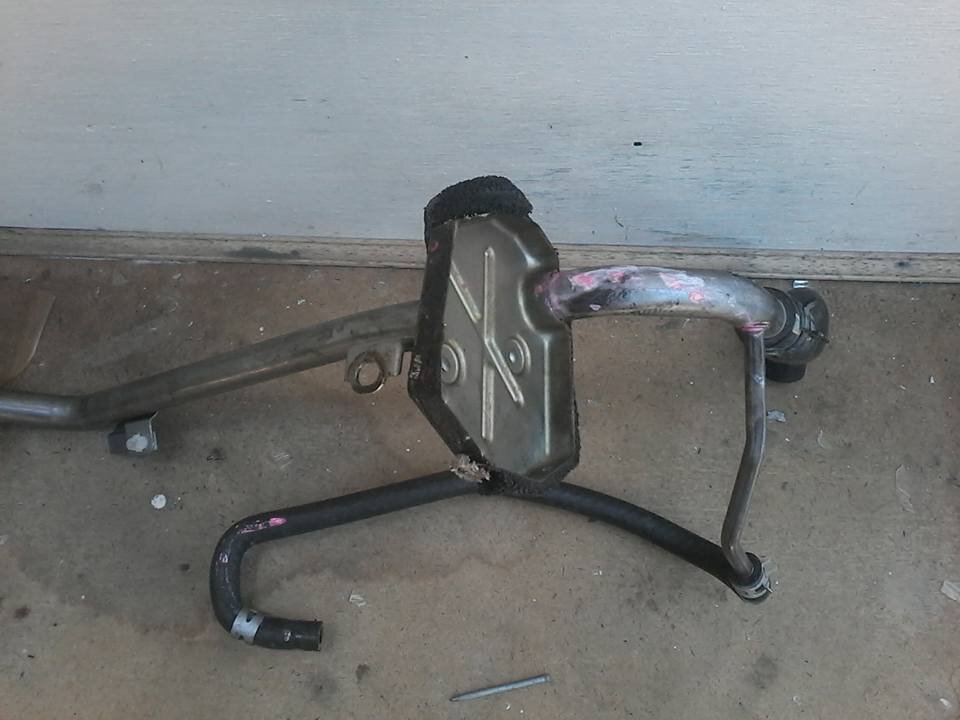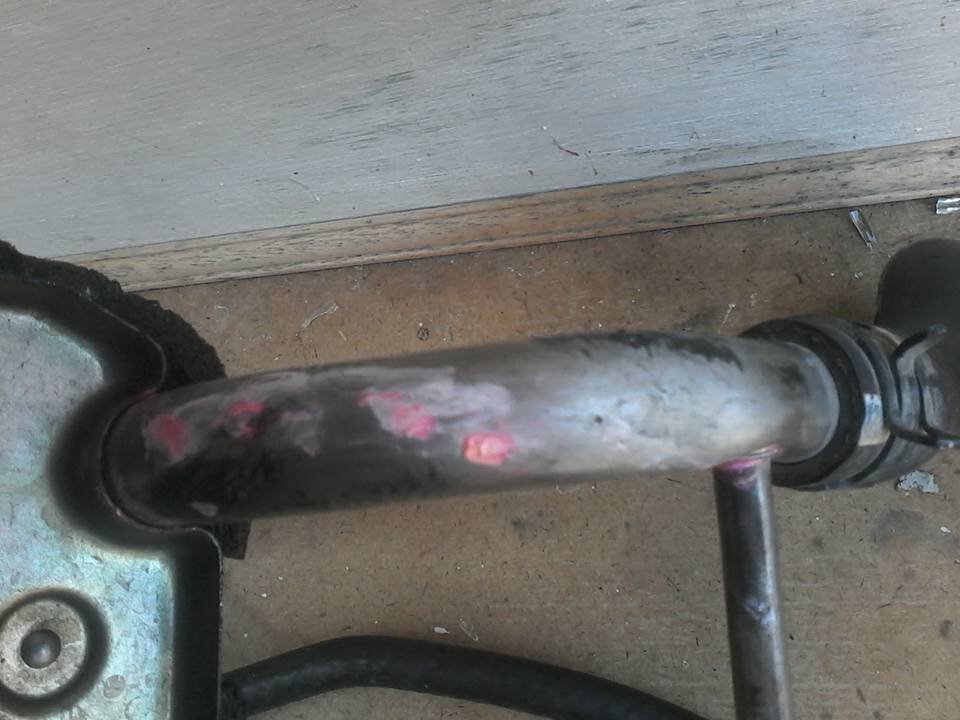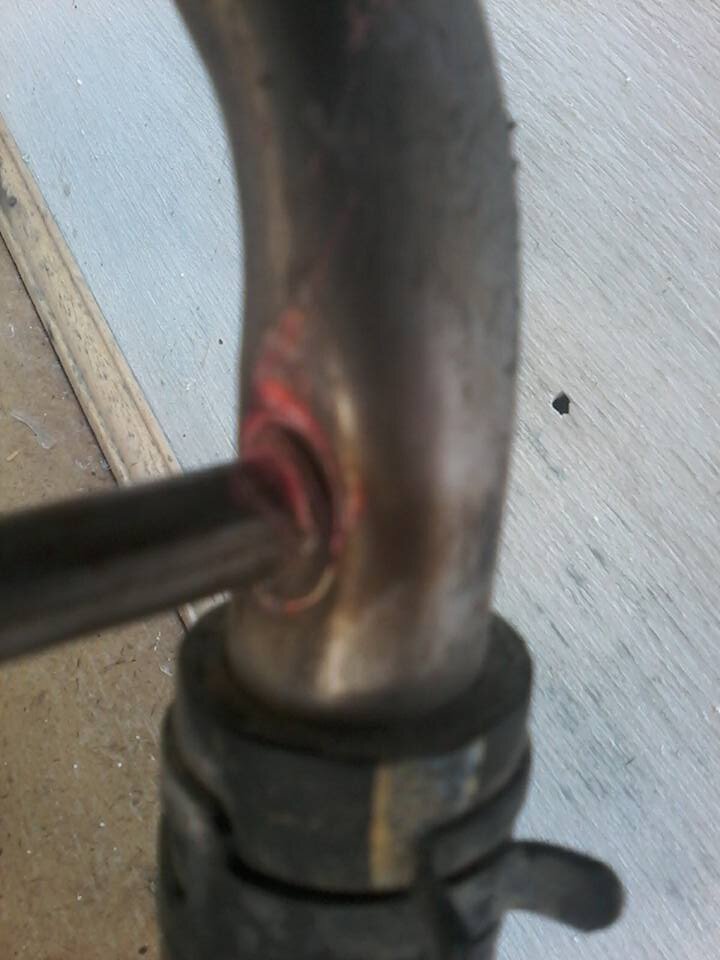Damien
New Member
- Joined
- Nov 21, 2017
- Messages
- 17
- Country Flag
Hi guys I am looking for some ideas/wisdom.
Awhile ago I rebuilt my 5VZFE. Did the heads. Rear seals all of it. Goes great. Did the knock sensors. But it did seem to eat more coolant than is normal. Went in to it today. Turns out I missed the deal with the darn rusting top tube.
I should have known since it has little white paint dots all over it for places that have now become leaks!
What I think has happened is that where the coolant bypass joins at the rear exit end of the tube where it goes upwards after it exits the block it has begun to leak. That has flowed down back along the tube and pooled up between the heads at the back. I am pretty sure this is not a leak from the manifold above or a leak from the gaskets or the welch plugs.
Anyway I've got a replacement ( used ) tube to put in.
But before I go ahead and just repeat the same problem I am wondering if anyone has ever deleted/bypassed this darn tubing nightmare since I am pretty sure it is going to be a problem again.
Has anyone ever done something like :
1. Cut the little rust nipple off the bypass tube and then covered that area with tubing to seal it up. Then close up the circuit where it goes to the EFI ( loop it to itself ). I am not planning on going to the snow and not worried about it freezing and I am not considering this a performance modification. More a remove the problem modification.
2. Going one step further delete the entire evil tube from between the heads cap off the port from the block. Then lead a coolant to the circuit at the back from somewhere else hot. T barb. You get the general drift. Put it somewhere else that is not between the heads.
If option 2 isn't entirely insane where might be a good place to put a T-barb in and lead a tube from ?
Am I insane and is this a crazy idea anyone done this ?
I also posted this over at the PradoPoint forum to see if anyone thar might have any ideas.
Thanks !
Awhile ago I rebuilt my 5VZFE. Did the heads. Rear seals all of it. Goes great. Did the knock sensors. But it did seem to eat more coolant than is normal. Went in to it today. Turns out I missed the deal with the darn rusting top tube.
I should have known since it has little white paint dots all over it for places that have now become leaks!
What I think has happened is that where the coolant bypass joins at the rear exit end of the tube where it goes upwards after it exits the block it has begun to leak. That has flowed down back along the tube and pooled up between the heads at the back. I am pretty sure this is not a leak from the manifold above or a leak from the gaskets or the welch plugs.
Anyway I've got a replacement ( used ) tube to put in.
But before I go ahead and just repeat the same problem I am wondering if anyone has ever deleted/bypassed this darn tubing nightmare since I am pretty sure it is going to be a problem again.
Has anyone ever done something like :
1. Cut the little rust nipple off the bypass tube and then covered that area with tubing to seal it up. Then close up the circuit where it goes to the EFI ( loop it to itself ). I am not planning on going to the snow and not worried about it freezing and I am not considering this a performance modification. More a remove the problem modification.
2. Going one step further delete the entire evil tube from between the heads cap off the port from the block. Then lead a coolant to the circuit at the back from somewhere else hot. T barb. You get the general drift. Put it somewhere else that is not between the heads.
If option 2 isn't entirely insane where might be a good place to put a T-barb in and lead a tube from ?
Am I insane and is this a crazy idea anyone done this ?
I also posted this over at the PradoPoint forum to see if anyone thar might have any ideas.
Thanks !








